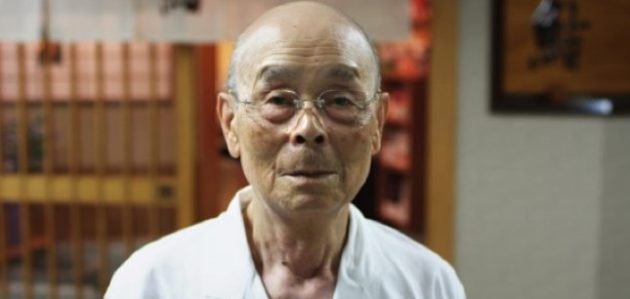REVIEW: Jiro Dreams of Sushi Explores the Drive to Make Beautiful Things That Are Edible Too

Is it possible to love a piece of dead fish more than you love people? That’s the question asked, implicitly if not directly, by David Gelb’s documentary Jiro Dreams of Sushi, a portrait of 85-year-old sushi master Jiro Ono that is itself as meticulous and carefully formed as a piece of nigirizushi. The movie’s title comes from an interview with Jiro, who speaks of waking up in the middle of the night with new ideas for perfecting and enhancing his craft. Then we see him standing stiffly behind the bar at his Tokyo restaurant, waiting with an air of placid annoyance for a customer to consume one of his precise and studied creations: With his hands, he has made a dream you can eat. And he wants you to know it.
Gelb’s documentary is tactile in the same way. In fact, it’s so strictly visual – as opposed to sensual – that unlike most well-made movies about food, it may not send you walking out hungry. A food-critic friend and I were discussing this phenomenon: It could be, as my friend posited, that sushi, though among the most beautiful of all consumables, is just “not very food porny.” And it’s true: I left Jiro Dreams of Sushi wanting not to eat, but to make jewelry, preferably with the most colorful, carefully polished beads or stones available.
Jiro, as he himself tells us in the film, has been mastering the art of making sushi nearly his whole life. For years he has run Sukiyashi Jiro, a 10-seat sushi restaurant in Tokyo, and though the place is just a modest – if elegant – dinerlike strip, it was the first restaurant of its kind to be awarded three Michelin stars. His eldest son, Yoshikazu, works in the restaurant with him, and though it’s strongly hinted that his skills are nearly as well-honed as those of his father, Jiro shows no signs of being ready to pass the torch along. A younger son runs another sushi restaurant on the other side of town, an enterprise Jiro talks about with gibing pride. He himself, as it turns out, struck out on his own before he was even a teenager, supporting himself any way he could. When his younger son decided to start the restaurant, Jiro told him he had better succeed, because he had no home to go back to. He derides the idea of parents who reassure their children they can always come home. “When parents say stupid things like that,” he says, “the kids turn out to be failures.” That gives us a few clues to his parenting style.
And yet Jiro’s grudging love for, and pride in, his children shines through, even though it’s something he’d rather not advertise. (At one point he concedes, “I wasn’t much of a father,” and no mention is made of the children’s mother, though we see her in a photograph or two.) That’s one of the strengths of Gelb’s understated technique – he never tells when he can show, letting Jiro do most of the talking, though we also hear from Tokyo restaurant critic Yamamoto (who informs us plainly that in the dozens of times he has eaten at Sukiyabashi Jiro, he has never had a disappointing meal) and the fish dealer who proudly supplies Jiro with those all-important raw ingredients (although Jiro, who used to do all the marketgoing himself before suffering a heart attack, now leaves the daily shopping to Yoshikazu).
Mostly, though, we see Jiro at work, sometimes supervising his devoted but slightly cowed restaurant workers, but more often just making the stuff: The precision of his hand movements is something to behold, as he forms a small dollop of rice into a suitable bed for a piece of glistening salmon or mackerel. As he cuts through a slab of tuna, the pieces fall away in thick, red ribbons – this is what velvet would look like if you could slice it. Jiro's quest for perfection is all-consuming and, the film suggests, won’t be quelled until he draws his last breath, or until his limbs stop working, whichever comes first. At its simplest level, Jiro Dreams of Sushi is a portrait of a master. In its deeper layers, it explores what drives us to make things: Beautiful, jewel-like things, or things that delight our palate – or, in this case, both.
Follow Stephanie Zacharek on Twitter.
Follow Movieline on Twitter.

Comments
If we're doing a replay of the '30s -- and I think we are -- we're due soon for your preferred wit and grace, back in the movies again. It is fair to wonder if from out of our current gunk this trending won't produce anything plausible or satisfying, for being but the silt that is still a grand step up from mud, and so to Japan and Europe we'll go. I certainly feel the lure to precision and French, but it isn't very '60s -- the best, most human, decade of last century. Let's grace that period of awesome fumbling and honesty with some fidelity and remembrance, hopefully.
Hello blogger i see you don't monetize your blog. You can earn extra
bucks easily, search on youtube for: how to earn selling articles